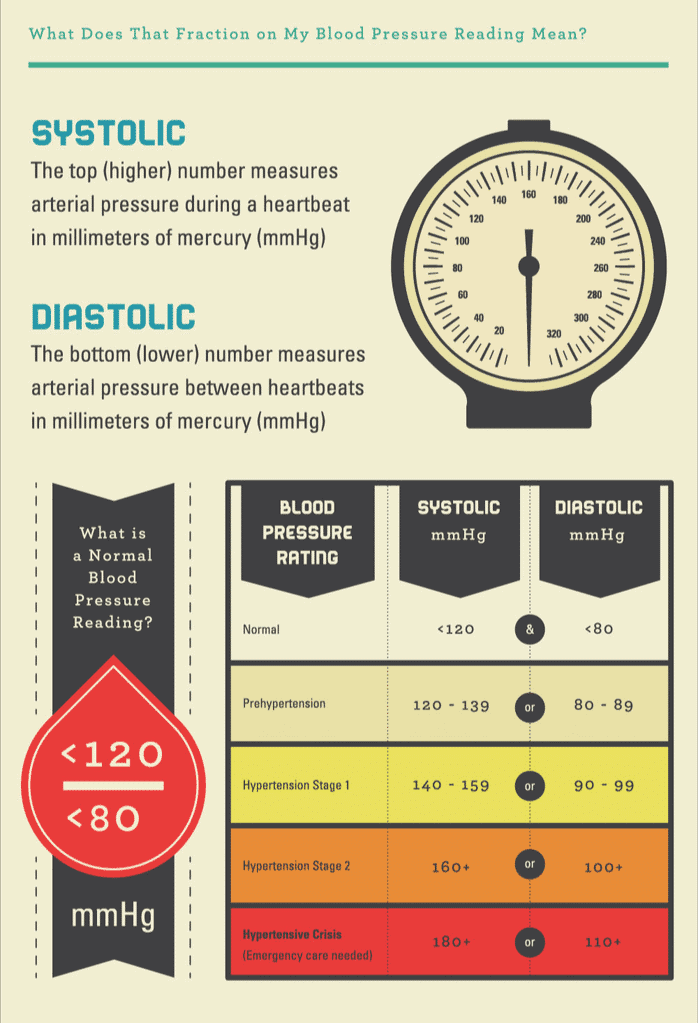Blood pressure is measure in millimeters of mercury (mmHg) and recorded as two numbers, systolic and diastolic. Systolic is the top number (also the higher one), which measure the pressure in the arteries when the heart beats, so when its muscles contract. Diastolic the bottom number (also the lower one), which measures the pressure in the arteries between heart beats, so when the muscles relax and refill with blood. The blood pressure chart reflects the categories defined by the American Heart Association. A normal blood pressure is less than 120/80. If your blood pressure numbers are between 120/80 and 139/89, you have pre-hypertension, which means that you are likely to develop high blood pressure. If your blood pressure numbers are 140/90 or above, you have high blood pressure. For instance, if your systolic blood pressure is between 140 and 159, and your diastolic blood pressure is between 90 and 99, you have Stage 1 Hypertension. You have Stage 2 Hypertension if your systolic blood pressure is over 160 and you diastolic blood pressure is over 100. If your numbers are higher than that, you are in hypertensive crisis and need emergency care.




